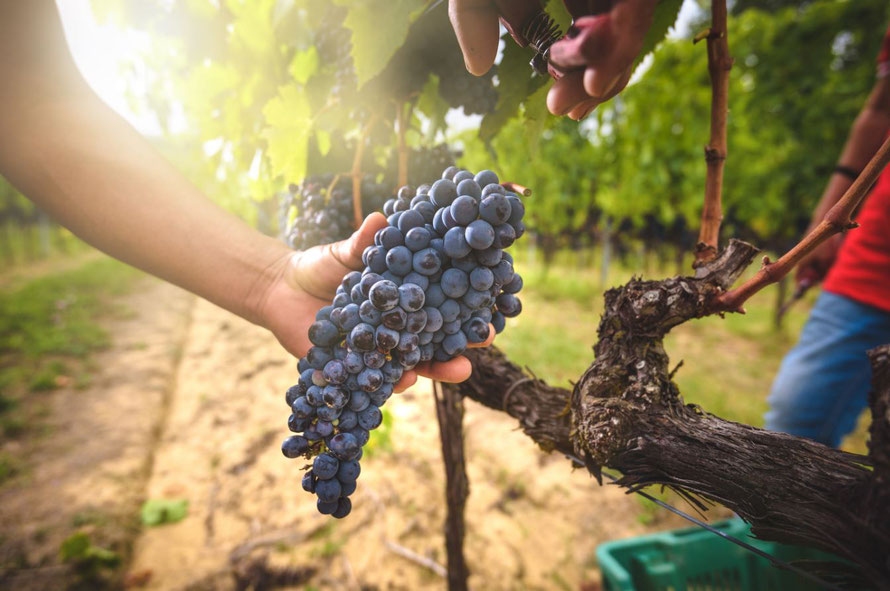From honest, youthful-cheerful table wine that dances in your glass to highly complex storage wine that stands its ground alongside the cream of the crop in the wine world. Sangiovese, the Italian grape in its Tuscan home. TEXT HUIB EDIXHOVEN
The name sangiovese is apt. It derives from the Latin Sanguis Jovis, or 'blood of Jupiter'. Whether sangiovese dates back to the time of this lightning-throwing Roman chief god is uncertain. That the grape is thoroughly Italian is a fact. Sangiovese is responsible for a slew of resounding Italian wine names. Just think of Chianti or Brunello di Montalcino. This is not to say that sangiovese has a single manifestation. Far from it, because this Italian grape is an all-rounder. Sangiovese manages to cover an insanely broad spectrum of wine styles and you can actually say that there is something for everyone among them.
Its origins
It was long thought that sangiovese was as Tuscan as the De' Medici family, the Mona Lisa and Michelangelo put together. But modern DNA techniques in the 21st century show otherwise. To many people's surprise, sangiovese turns out to be a cross between a Tuscan and Calabrian grape. The Tuscan super grape with direct roots in the tip of the boot? Few expected that. And there are more surprises. It also turns out that sangiovese under pseudonyms is simply planted for wine production as far south as Italy. OK, so sangiovese can be found almost all over Italy, yet it is central Italy where sangiovese is most at home - with the epicentre being ancient Tuscany. Here, in the rolling, cypress-strewn landscape, scented with resin, lavender and rosemary, in this sun-drenched part of Italy among ancient villas, sangiovese feels most at home.
His taste
As mentioned, there are quite a few differences in style with which sangiovese manages to charm wine lovers. However, that does not mean that sangiovese does not have its own character, in fact it certainly does. Very recognisable are the ever juicy acids that also immediately make the wine so suitable at the lunch or dinner table. These fresh acids rinse your mouth clean, making you immediately crave the next bite. A classic interaction between wine and food. At the other end of the spectrum are the tannins. These can range from quite light to very present. But here, too, sangiovese has a characteristic of its own. Namely, the tannins have a rather distinctive profile of their own. You quickly experience them as slightly grainy or 'rullerish'. They give a special and unique mouthfeel. In terms of flavour, a lot obviously also depends on where the grapes are planted and how the winemaker works. In the base you will find a lot of red fruit. Think strawberry, raspberry, rose hip and red sour cherry. Besides the fruit, there is often a herbaceous, spicy side to sangiovese wine. Dried shrubs, tea leaves, grilled herbs and thyme are all regularly encountered in the glass.
The whole article can be read in WINELIFE #65. You can order here.
Don't want to miss a single edition? Subscribe then subscribe to Winelife Magazine now!




